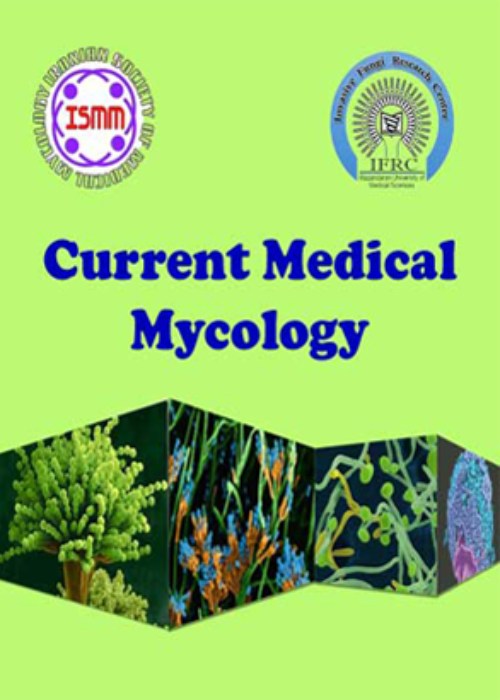Catheter-related candidemia and identification of causative Candida species in patients with cardiovascular disorder
Author(s):
Article Type:
Research/Original Article (دارای رتبه معتبر)
Abstract:
Background and
Purpose
Catheter-related blood circulation infection is the most dangerous and serious side-effects of vascular catheters, which leads to the enhancement of the costs, mortality, and hospital stay duration, especially in the Intensive Care Unit. Regarding this, the aim of the current study was to identify the prevalence of catheter-induced candidemia in the Tehran Heart Center, a heart hospital in Tehran, Iran.
Materials and Methods
This study was conducted on patients admitted to Tehran Heart Center for a minimum of 7 days during 18 months. To detect the fungal elements, blood culture and catheter culture were performed in the patients receiving central or peripheral venous catheter. Then, the polymerase chain reaction (PCR) was applied to determine the possible diagnosis.
Results
The investigation of 223 samples led to the identification of a total of 15 (6.7%) yeast isolates obtained from 9 (60%), 4 (26.6 %), and 2 (13.4%) catheter, blood, and skin (of the catheter insertion areas) cultures, respectively. Out of nine Candida isolates obtained from the catheter samples, 1 (11.1%), 1 (11.1%), 2 (22.2%), and 5 (55.6%) cases were identified as C. tropicalis, C. membranifaciens, C. glabrata, and C. albicans, respectively, using the internal transcribed spacer region sequencing. Furthermore, the four yeasts isolated from the blood culture included C. tropicalis, C. carpophila, C. membranifaciens, and Cryptococcus albidus. Additionally, one case of C. glabrata and one case of C. albicans were isolated from the skin culture of the catheter insertion areas in patients with positive catheter culture. We reported two cases of catheter-related candidemia caused by C. membranifaciens and C. tropicalis on the basis of the genetic similarity of the species isolated from the blood and catheter. These cases were treated successfully with intravenous fluconazole and catheter removal.
Conclusion
There is some evidence indicating the growing prevalence of non-albicans Candida infections. Many risk factors, including prior antibiotic therapy, use of a central venous catheter, surgery, and parenteral nutrition, are considered to be associated with candidemia in hospitalized heart failure patients. The identification of the route of infection in candidemia is difficult. In the current study, the positive blood and catheter cultures for Candida isolates and the similarity of the ITS region of ribosomal DNA sequence of Candida isolated from two patients confirmed the diagnosis of intravenous catheter-related candidemiaKeywords:
Language:
English
Published:
Current Medical Mycology, Volume:4 Issue: 2, Jun 2018
Pages:
7 to 13
magiran.com/p1892725
دانلود و مطالعه متن این مقاله با یکی از روشهای زیر امکان پذیر است:
اشتراک شخصی
با عضویت و پرداخت آنلاین حق اشتراک یکساله به مبلغ 1,390,000ريال میتوانید 70 عنوان مطلب دانلود کنید!
اشتراک سازمانی
به کتابخانه دانشگاه یا محل کار خود پیشنهاد کنید تا اشتراک سازمانی این پایگاه را برای دسترسی نامحدود همه کاربران به متن مطالب تهیه نمایند!
توجه!
- حق عضویت دریافتی صرف حمایت از نشریات عضو و نگهداری، تکمیل و توسعه مگیران میشود.
- پرداخت حق اشتراک و دانلود مقالات اجازه بازنشر آن در سایر رسانههای چاپی و دیجیتال را به کاربر نمیدهد.
دسترسی سراسری کاربران دانشگاه پیام نور!
اعضای هیئت علمی و دانشجویان دانشگاه پیام نور در سراسر کشور، در صورت ثبت نام با ایمیل دانشگاهی، تا پایان فروردین ماه 1403 به مقالات سایت دسترسی خواهند داشت!
In order to view content subscription is required
Personal subscription
Subscribe magiran.com for 70 € euros via PayPal and download 70 articles during a year.
Organization subscription
Please contact us to subscribe your university or library for unlimited access!


